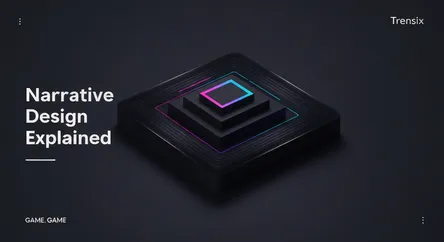Game
Narrative Design Explained

Discover what narrative design is and how it crafts the compelling stories and immersive worlds you experience in your favorite video games.
What is it?
Narrative design is the craft of creating a game's story and integrating it with gameplay. It's more than just writing a script; it's the architectural blueprint for how a player experiences a story. This includes creating the world, characters, plot, and dialogue, and then weaving them into the game's mechanics, level design, and art. The goal is to make the story an active, interactive element, not just a passive cutscene. It ensures that every part of the game, from a simple item description to a major plot twist, contributes to a cohesive and engaging narrative experience.
Why is it trending?
As gaming technology has advanced, players increasingly seek deeper, more emotionally resonant experiences. Games like The Last of Us or Cyberpunk 2077 have proven that a powerful story can be a massive commercial and critical success. Developers now recognize that strong narrative design is a key differentiator in a crowded market. It builds player loyalty and creates memorable worlds that fans want to revisit. Furthermore, the rise of streaming culture means games with compelling stories are more entertaining for viewers, expanding a game's reach beyond just its players.
How does it affect people?
Narrative design fundamentally shapes a player's emotional journey. A well-designed narrative makes players feel connected to the characters and invested in the world's fate. It gives context and meaning to their actions, transforming simple gameplay loops into an epic quest. When players' choices have tangible consequences on the story, it creates a powerful sense of agency and immersion. This leads to unforgettable gaming moments that resonate with players long after they've put the controller down, fostering passionate communities built around shared stories and lore.